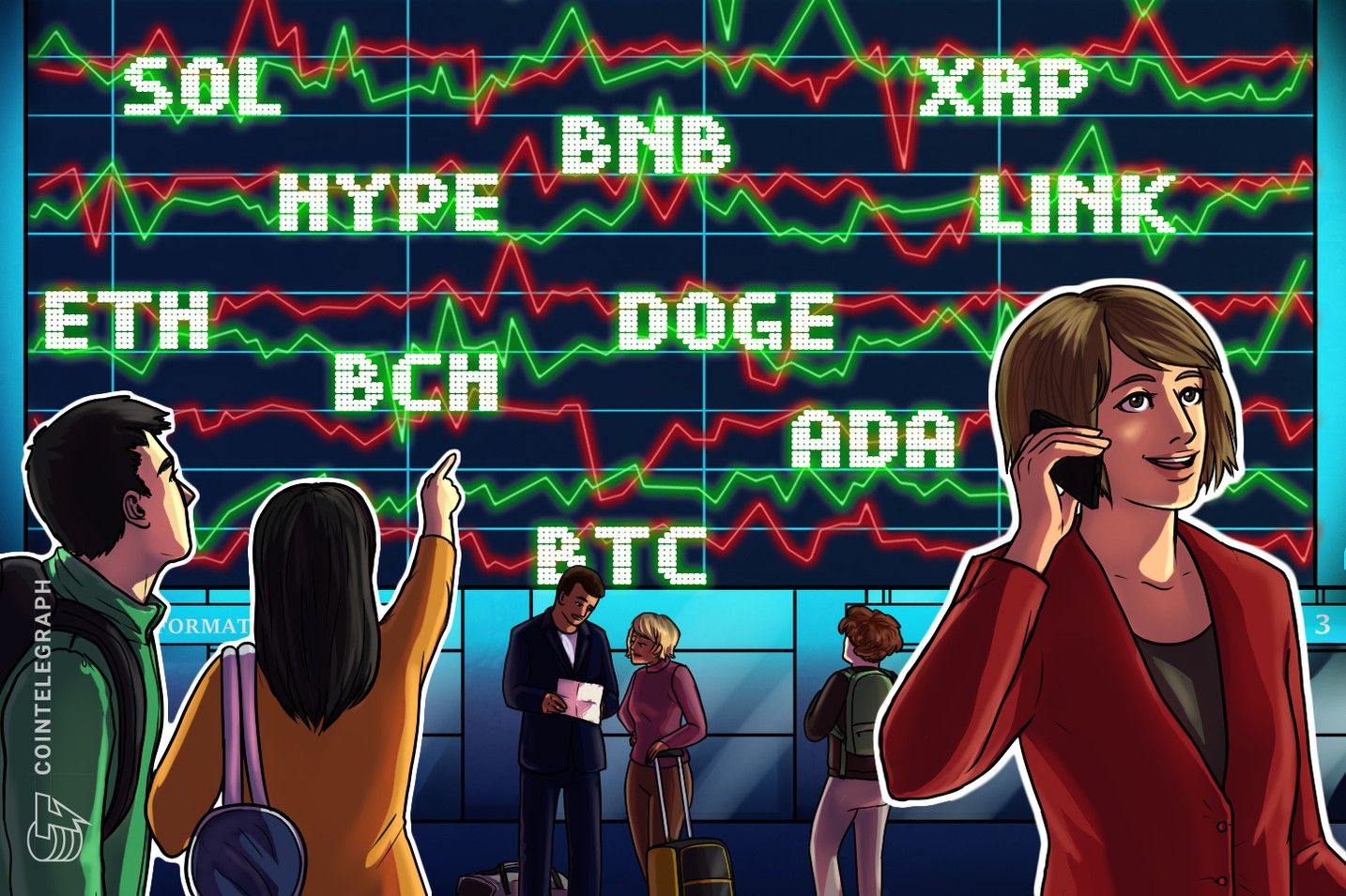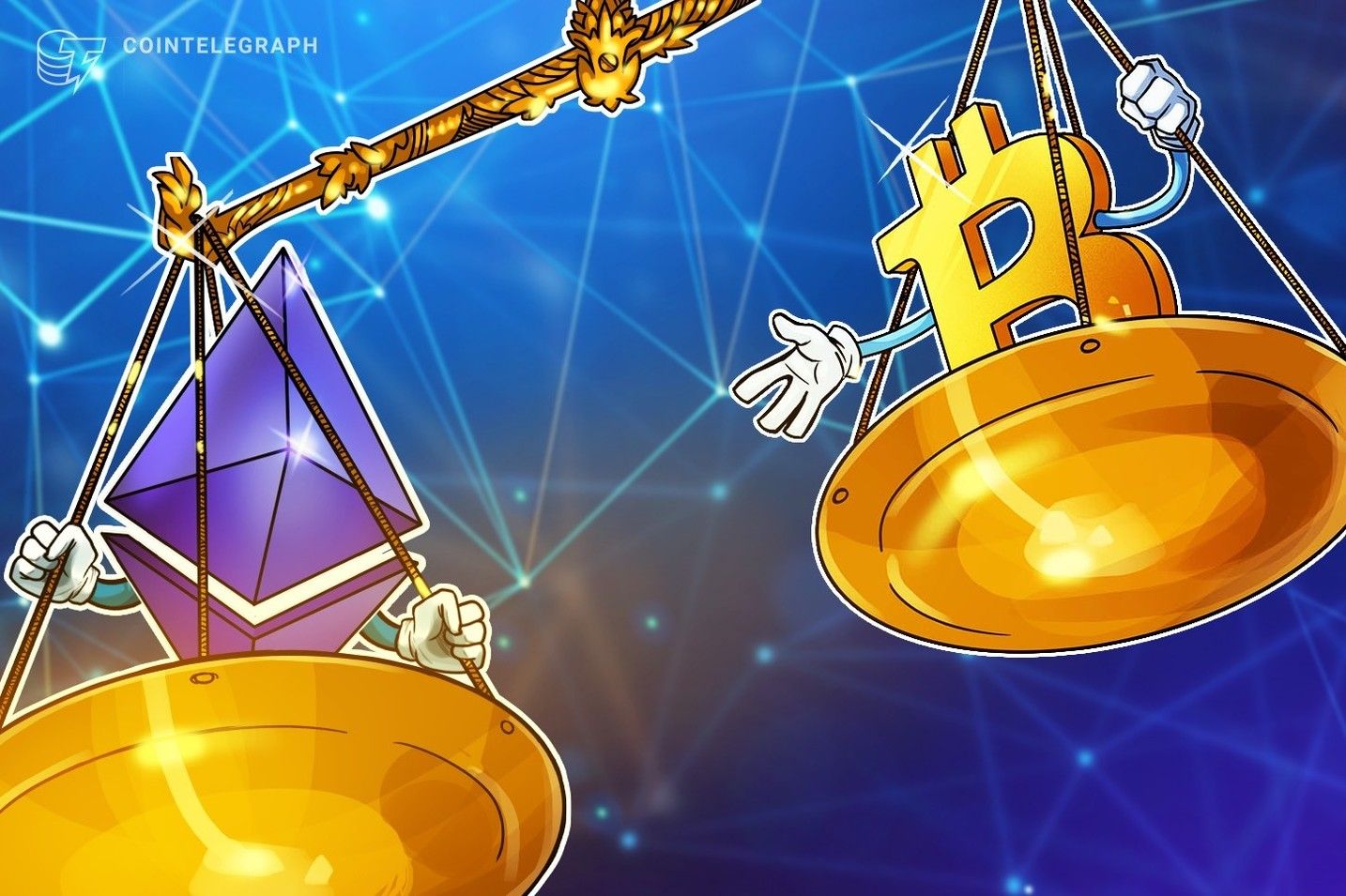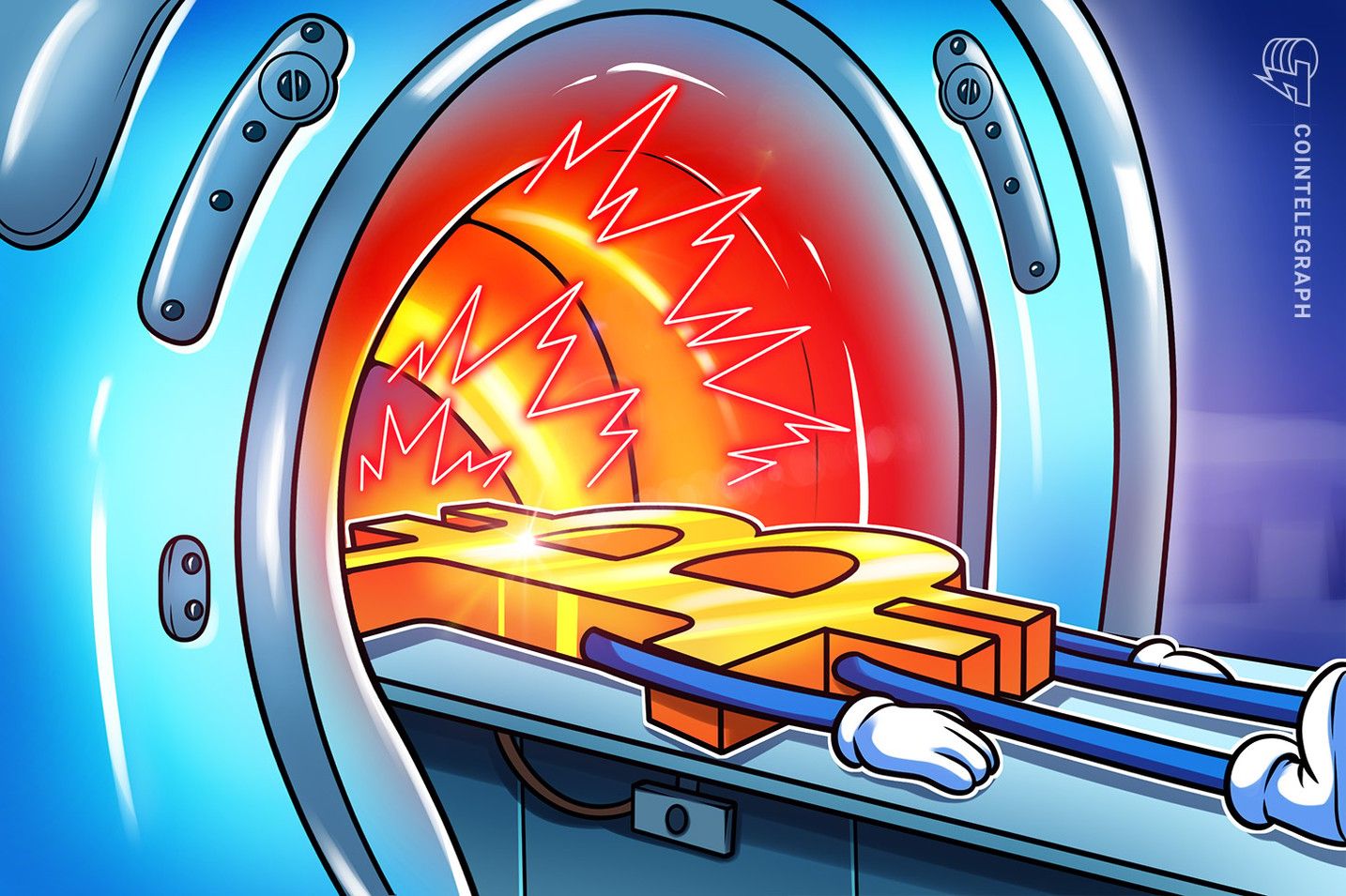Key Notes
- The MultiversX Foundation proposed to remove EGLD’s supply cap by adding a 9.47% annual tail inflation rate.
- “There can only ever be 30 million EGLD,” reads the project’s official website, promoting EGLD as an alternative to “currencies that can be printed endlessly”.
- EGLD is down 41% year-over-year, up 1.68% in the last 24 hours of October 3, 2025, at the time of writing, and ranked in the 147th position by market cap.
Robert Sasu, a core developer in the MultiversX Foundation, has posted a governance proposal presented at an official MultiversX Foundation event on October 3, “The Foundry,” related to the project’s economic model. Amid a series of topics discussed in the proposal, the removal of EGLD’s supply cap jumps to the eyes as it breaks multi-year promises made by the Foundation itself.
MultiversX, formerly known as Elrond, announced its rebrand in November 2022 at the xDay event in Paris, according to Coinspeaker . In September 2025, another MultiversX Foundation-owned project, xMoney, faced similar controversy by announcing a token migration from UTK to XMN that will effectively dilute the deprecated token holders by 30 or 10 times, depending on how they opt for the transition.
In particular, the “Inflation Rate and Burn Mechanism” section of the “ A Competitive Economic Framework for MultiversX: Toward Revenue and Reflexive Value Accrual ” just published governance proposal for EGLD includes adding a 9.47% annual tail inflation rate while burning 10% of the fees paid to validators.
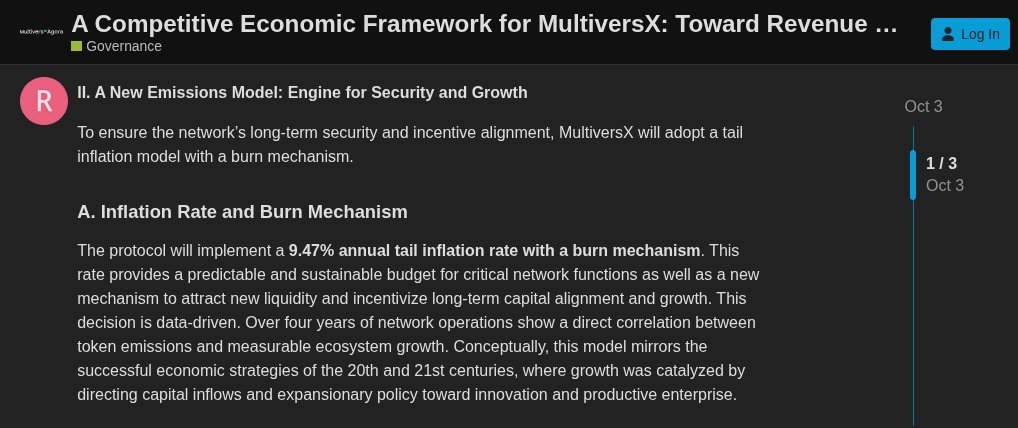
Governance proposal on MultiversX (EGLD) economics | Source: MultiversX Agora
Justin Bons—founder and CIO of CyberCapital, Europe’s oldest crypto fund—explained in a MultiversX Foundation-hosted Spaces on X that this is an economic model out of the industry’s standards, with too high an inflation rate and too low a burning rate, arguing against the proposal. Bons promised to write an article sharing his view, although his opinion was dismissed by other speakers for not disclosing the size of his exposure to the project.
Besides the intricacies of the newly proposed tokenomics, the controversy also lies around it breaking a core fundamental of the project, promoted for many years as having a similar model to Bitcoin’s BTC $122 458 24h volatility: 1.7% Market cap: $2.44 T Vol. 24h: $71.56 B scarcity with a hard-capped supply of around 31.4 million EGLD, according to MultiversX documentation.
On EGLD’s landing page on the Foundation-owned official website, multiversx.com/egld , this property can still be seen to this day. “There can only ever be 30 million EGLD,” a heading says.
“Unlike traditional currencies that can be printed endlessly, EGLD employs a capped issuance model, ensuring that only a predetermined number of tokens will ever be created. There are only 26 million EGLD in existence and a max theoretical limit of 31.4 million, relative to 8 billion people,” the text continues.
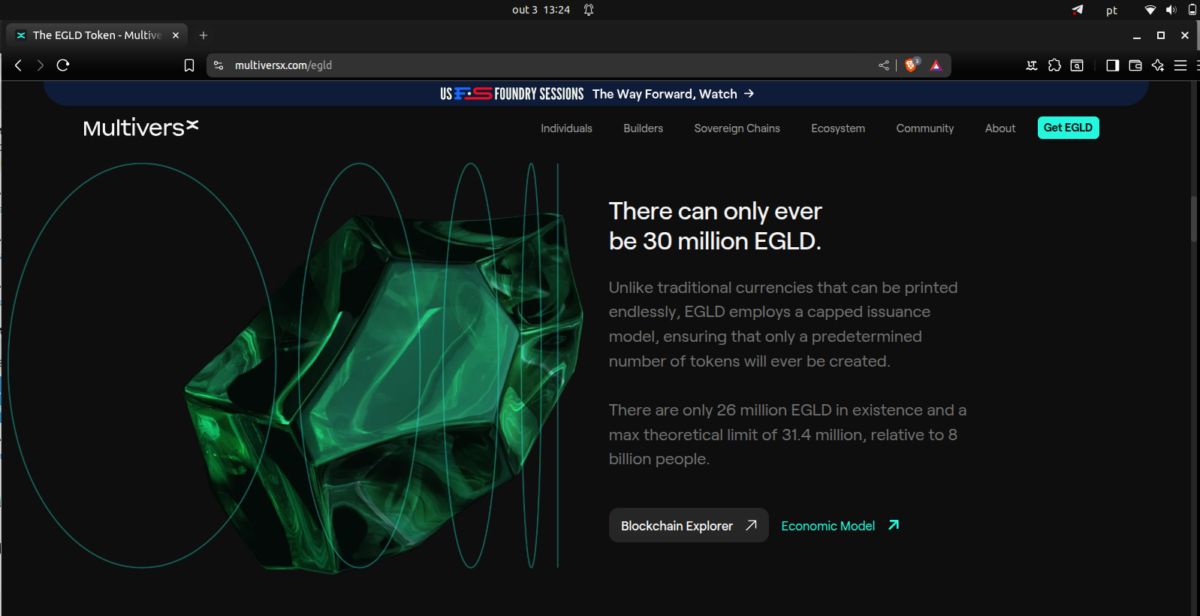
“The EGLD Token” landing page as of October 3, 2025 | Source: MultiversX.com
Robert Sasu himself, the author of this proposal, has publicly commented about this in the past, saying, “Nobody is talking about increase in supply,” when the discussion surged among some MultiversX advocates on X in February this year.
Nobody is talking about increase in supply. Ethereum has been discussing about economics changes constantly.
A few problems we have right now: even when the blocks are full, the fees are not enough to cover the inflation.
First and foremost we want to change that.
— Robert Sasu | dev/acc (@SasuRobert) February 6, 2025
MultiversX (EGLD) Price Analysis
As of this writing, the MultiversX token EGLD is trading at $14.25, down 41.31% year-over-year and up 1.68% in the last 24 hours with a $408.65 million capitalization, according to CoinMarketCap . The token has been consistently losing market cap ranks to other cryptocurrencies in the past months, currently sitting at the 147th position.
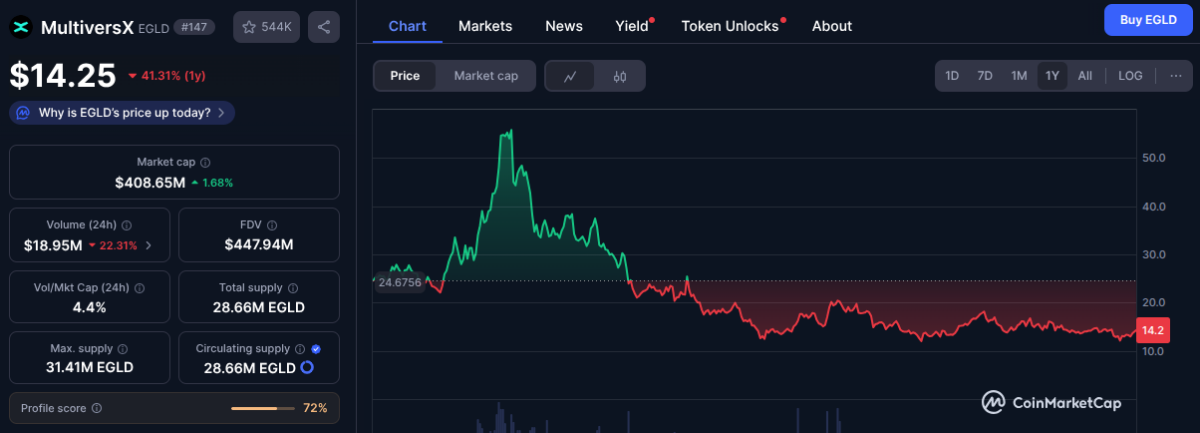
MultiversX (EGLD) market data and price as of October 3, 2025 | Source: CoinMarketCap
Overall, the proposal acknowledges MultiversX’s struggles and the need for a change, as also discussed in the aforementioned Spaces. The idea, according to the foundation’s representatives, is to foment growth and fuel the project’s move to the US, seeking a more friendly environment to build and deliver its vision of being an internet-scale blockchain.
The central argument for these changes is attracting liquidity and aligning long-term stakeholders, together with a fee burn that could hedge the inflation rate if the network sees enough usage and fees. This framework could theoretically help MultiversX achieve reflexive value accrual by creating a self-reinforcing cycle where increased adoption drives revenue, with 90% of fees directed to builders to incentivize innovation and the remainder burned or reinvested, based on the arguments presented.
In summary, it could position the network for competitive expansion by balancing incentives for users, developers, and investors, eyeing long-term viability and growth. Nevertheless, the decision is demonstrating itself to be controversial, especially by an inflation that goes above the industry standards and could punish long-term holders through supply dilution and increased selling pressure by validators and smart contract owners who could use these economics to help sustain and grow their businesses.
next
